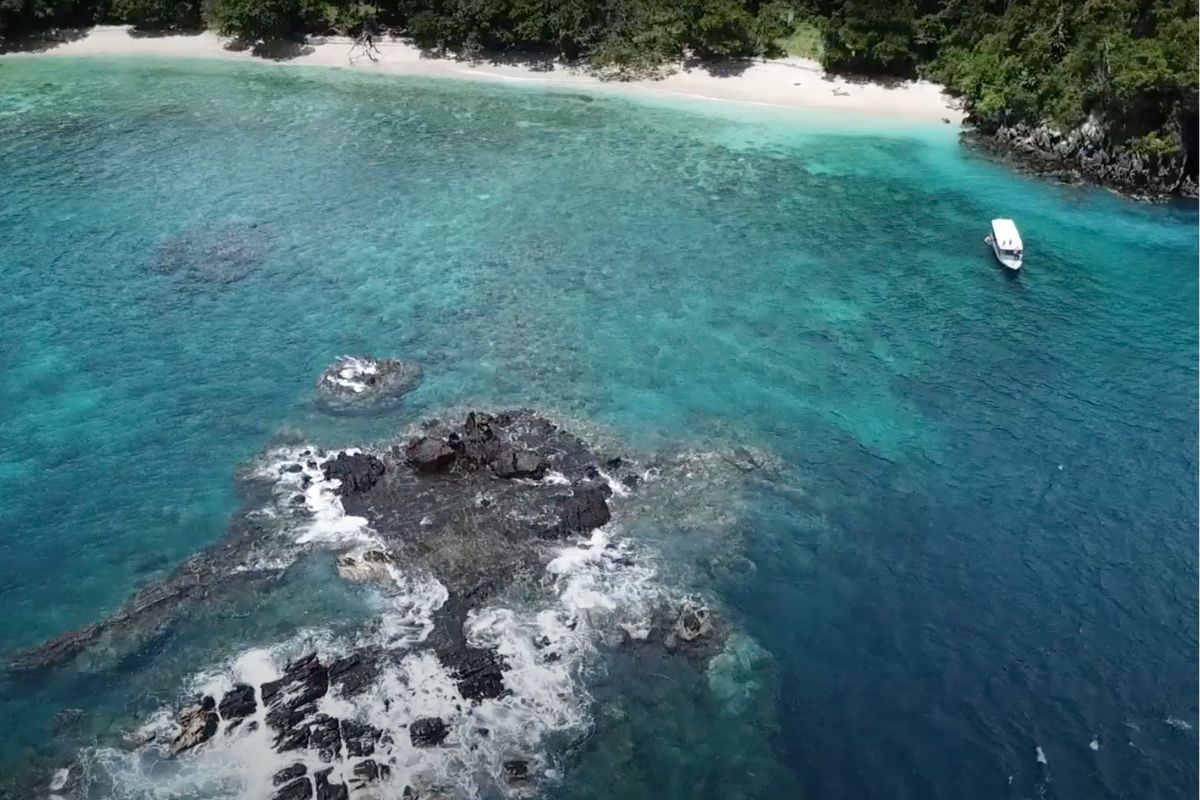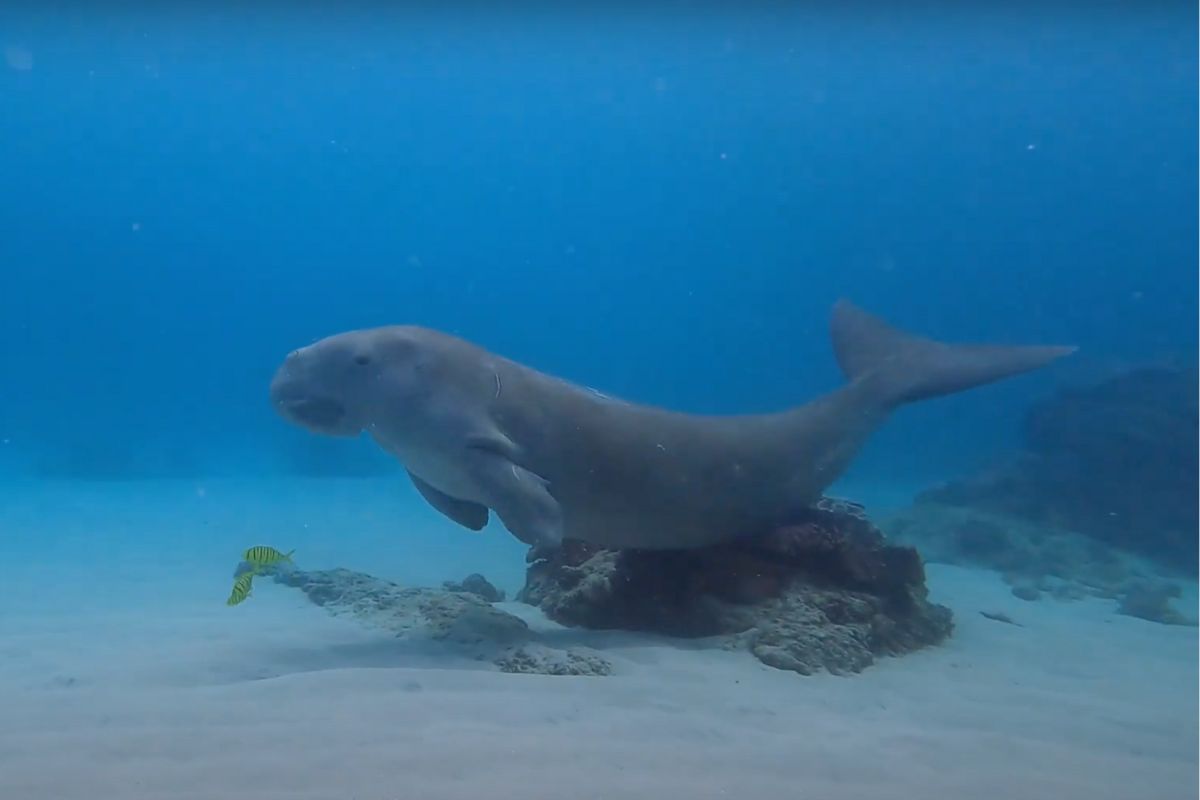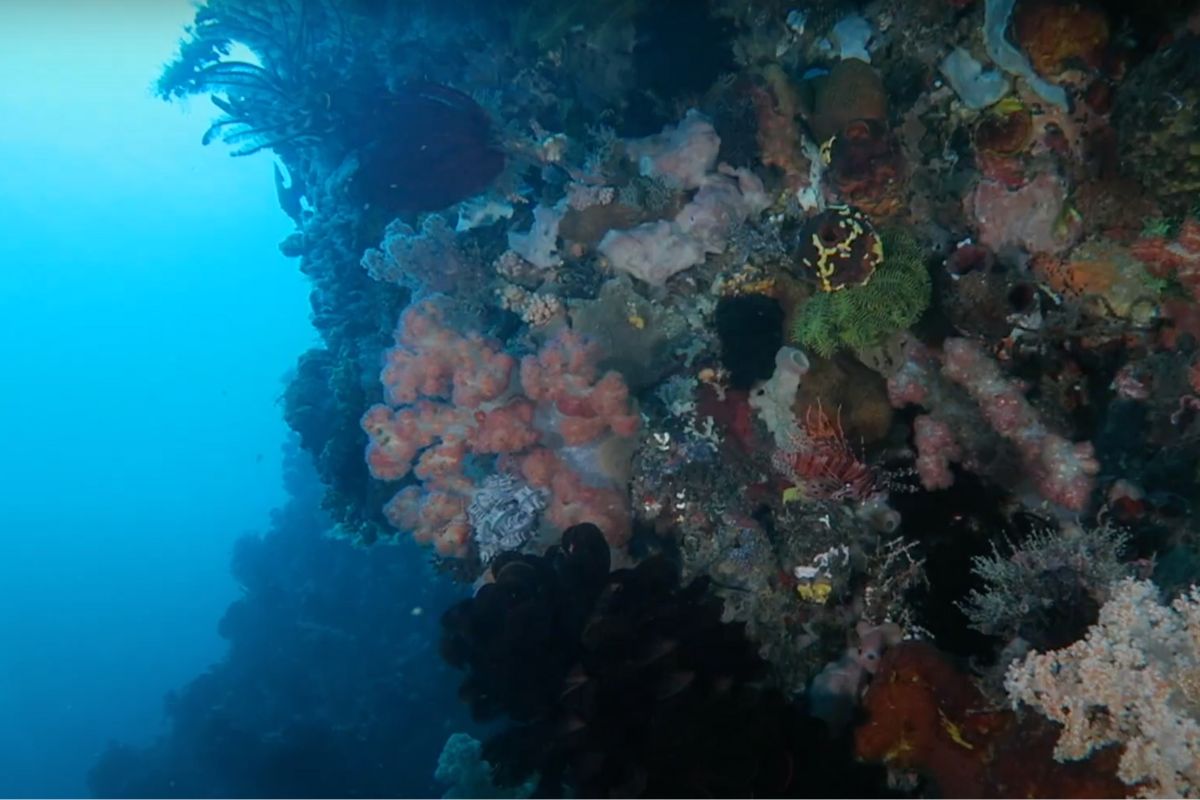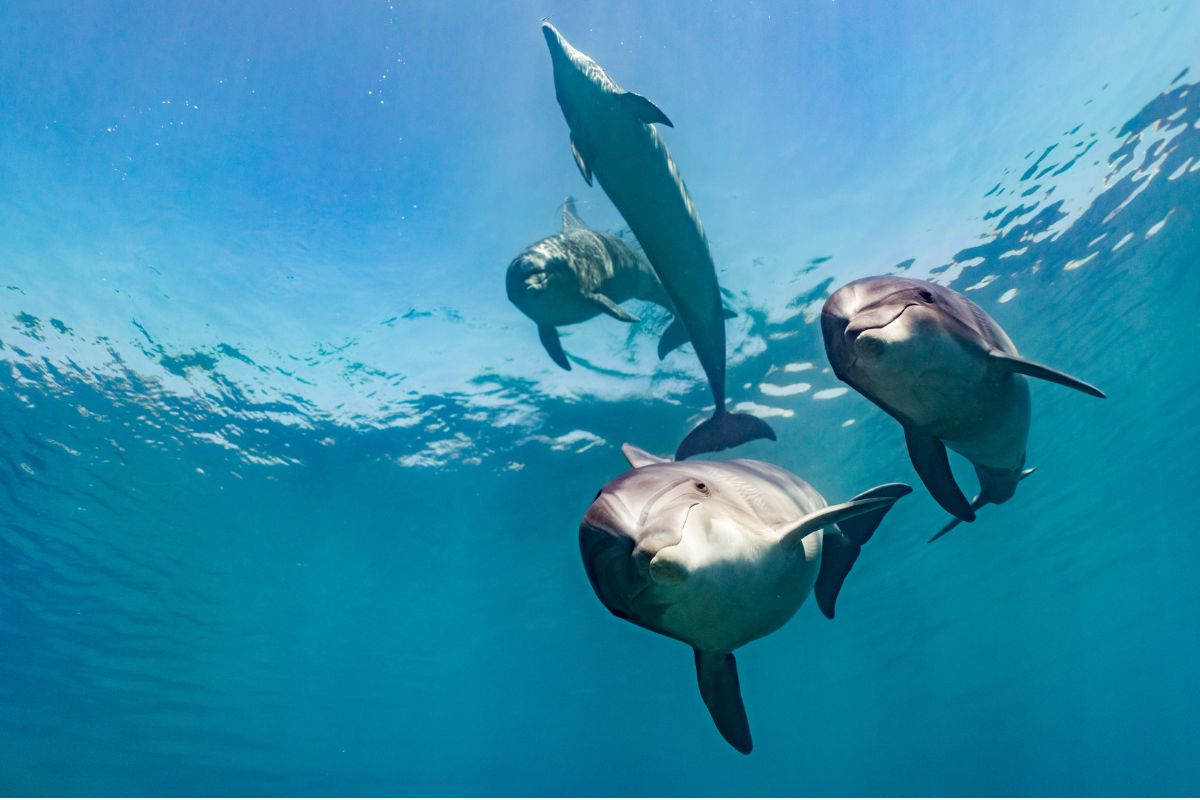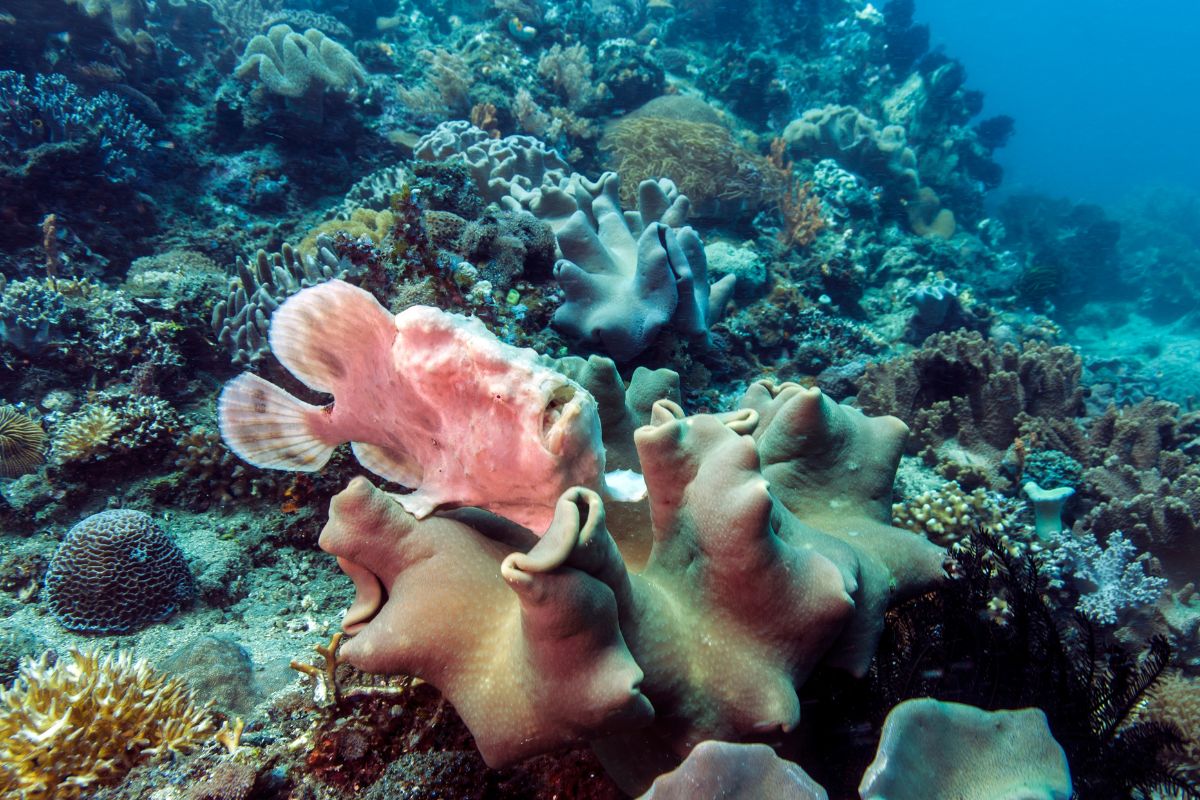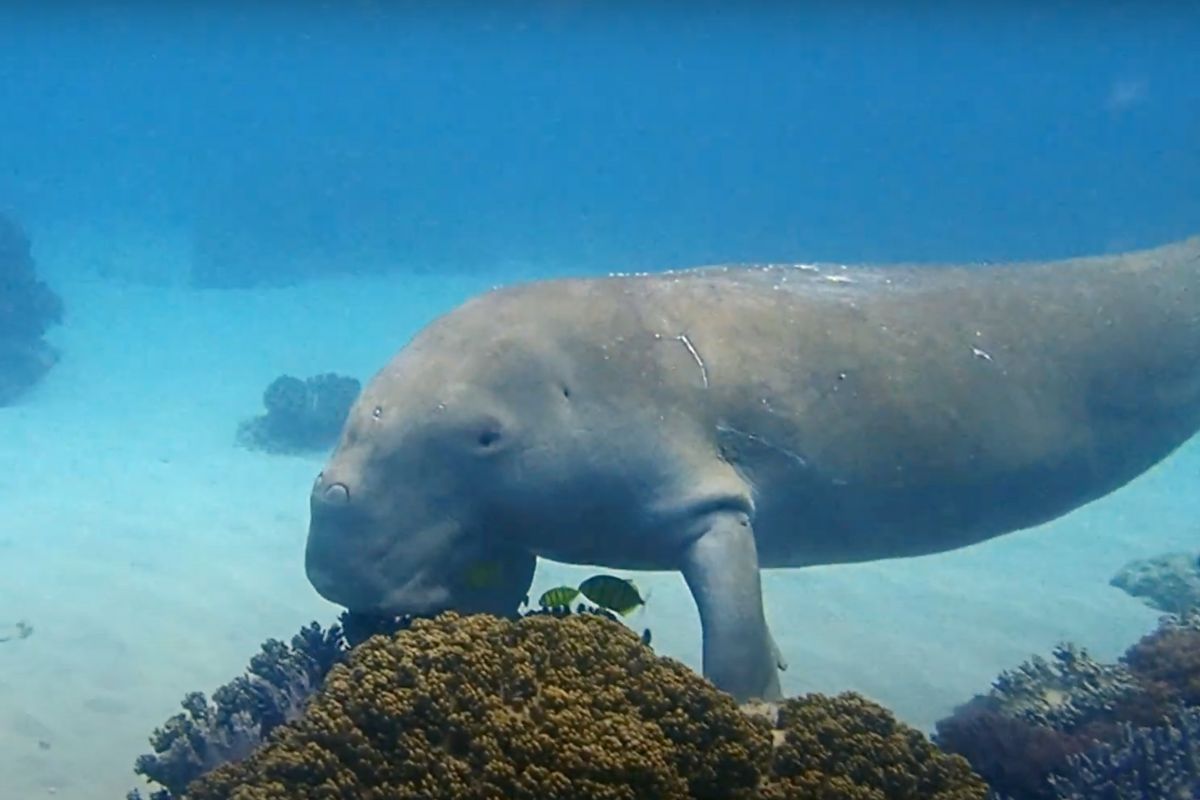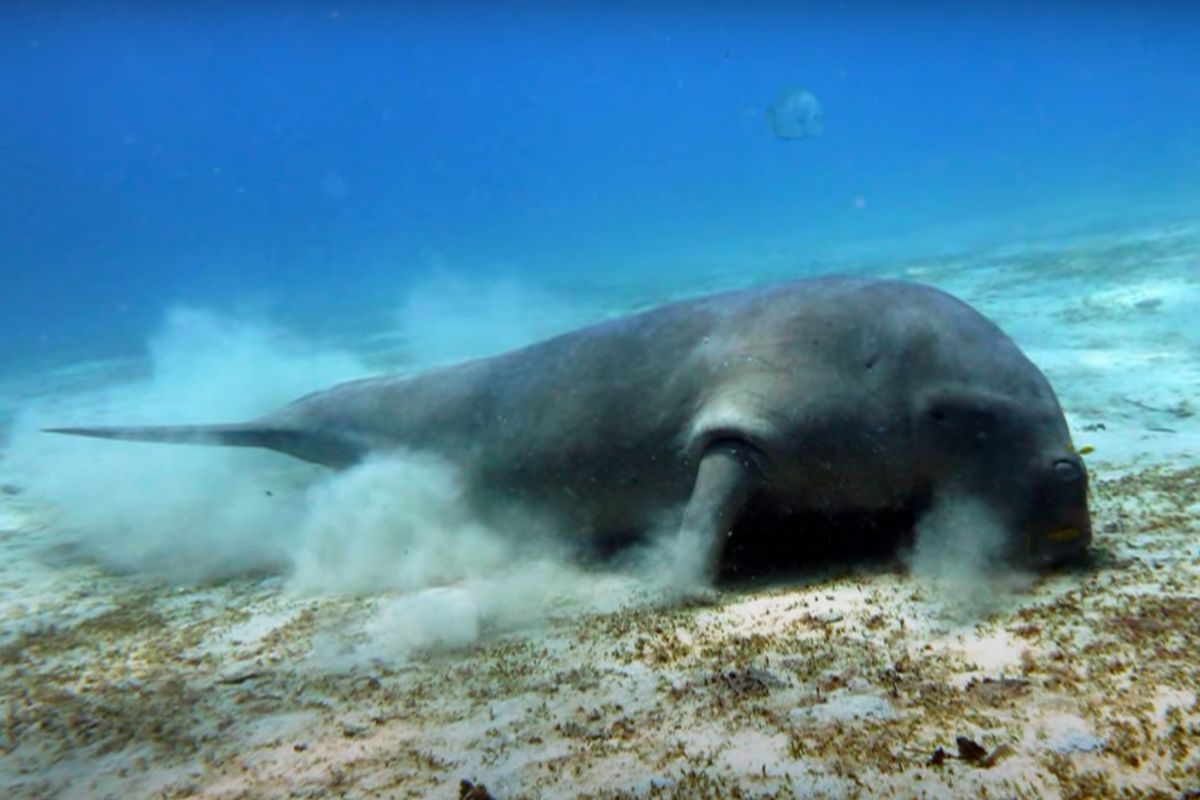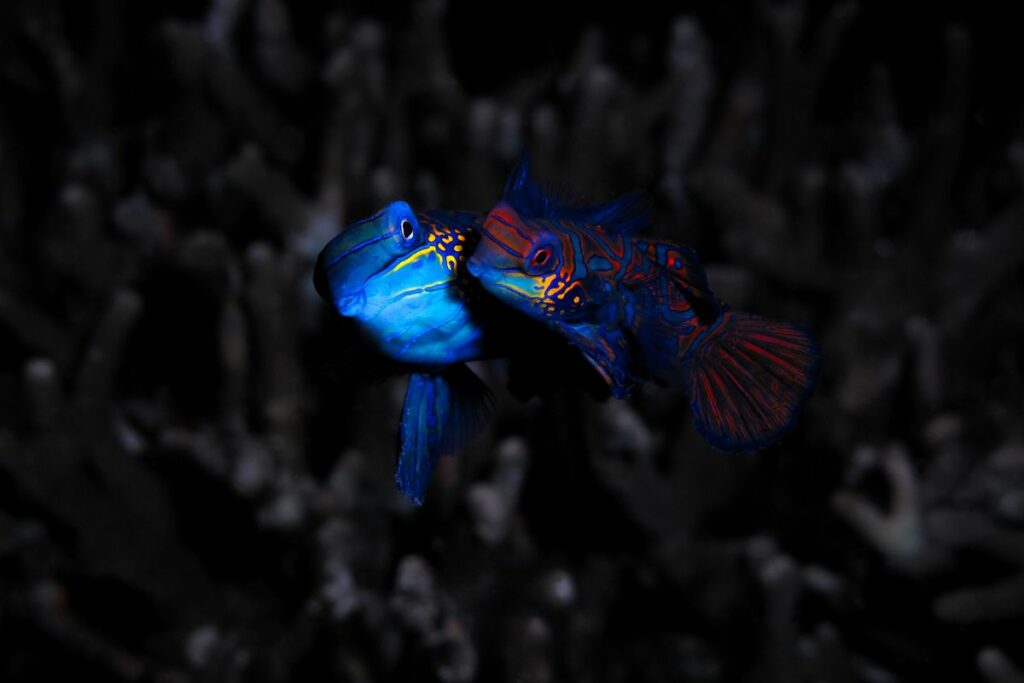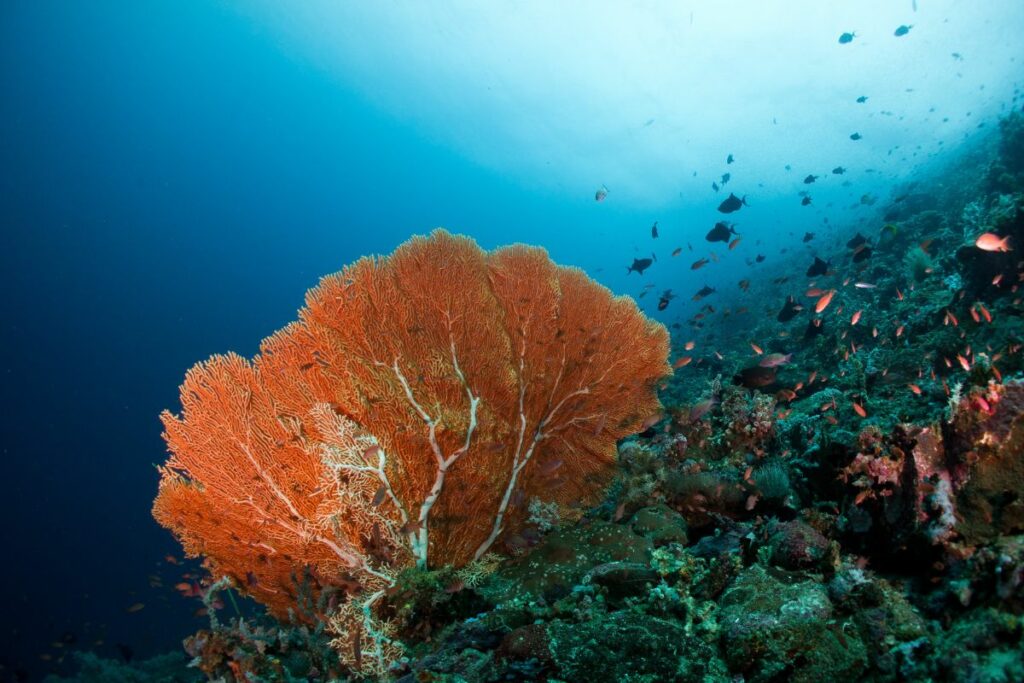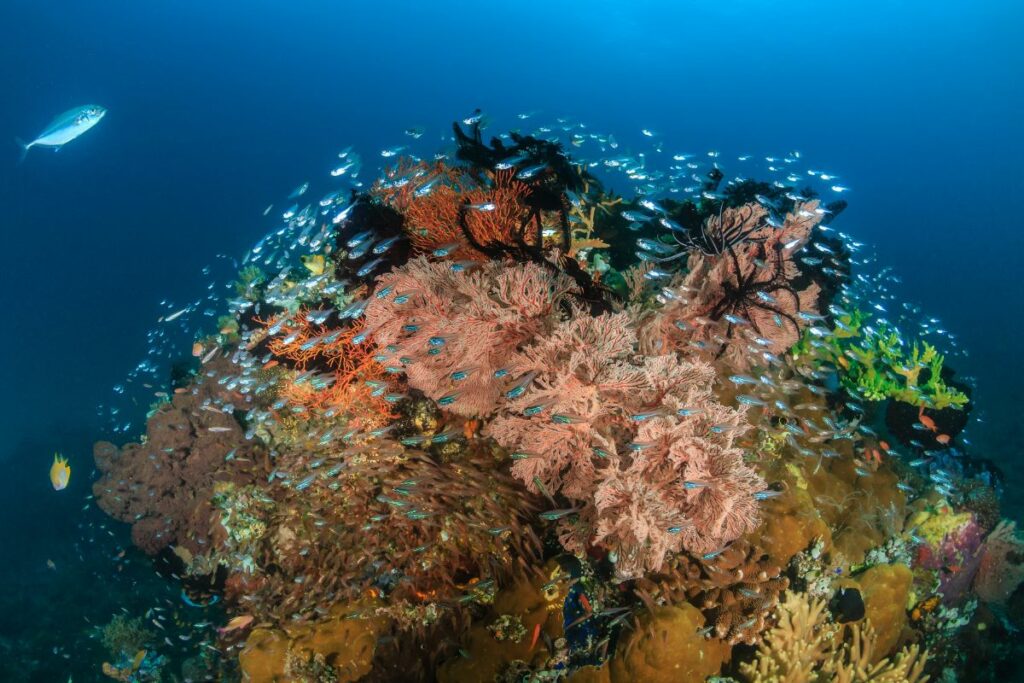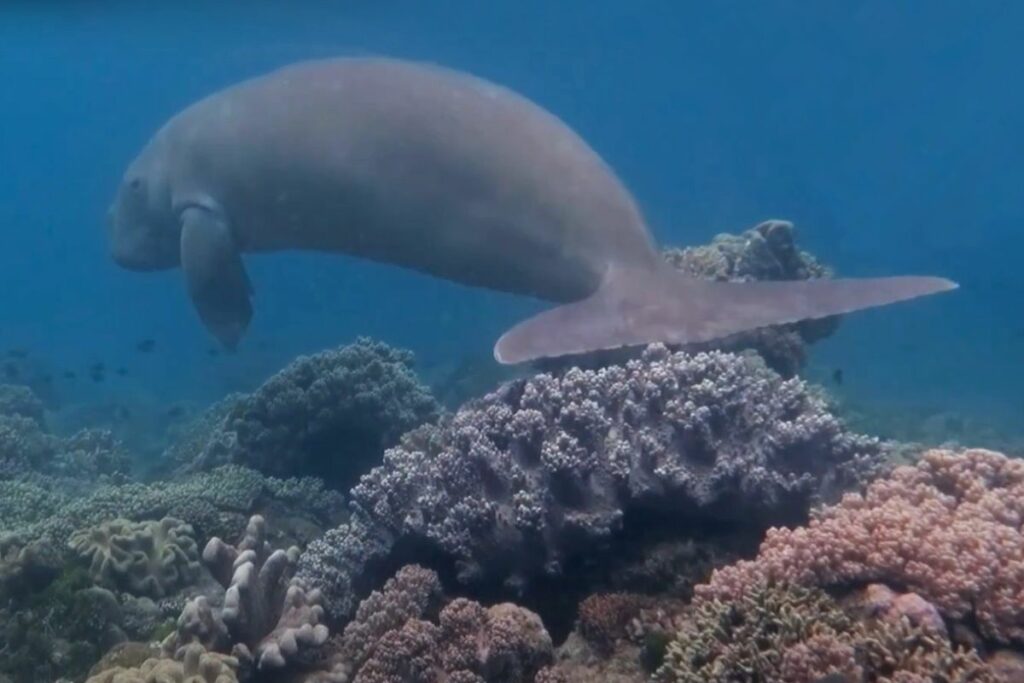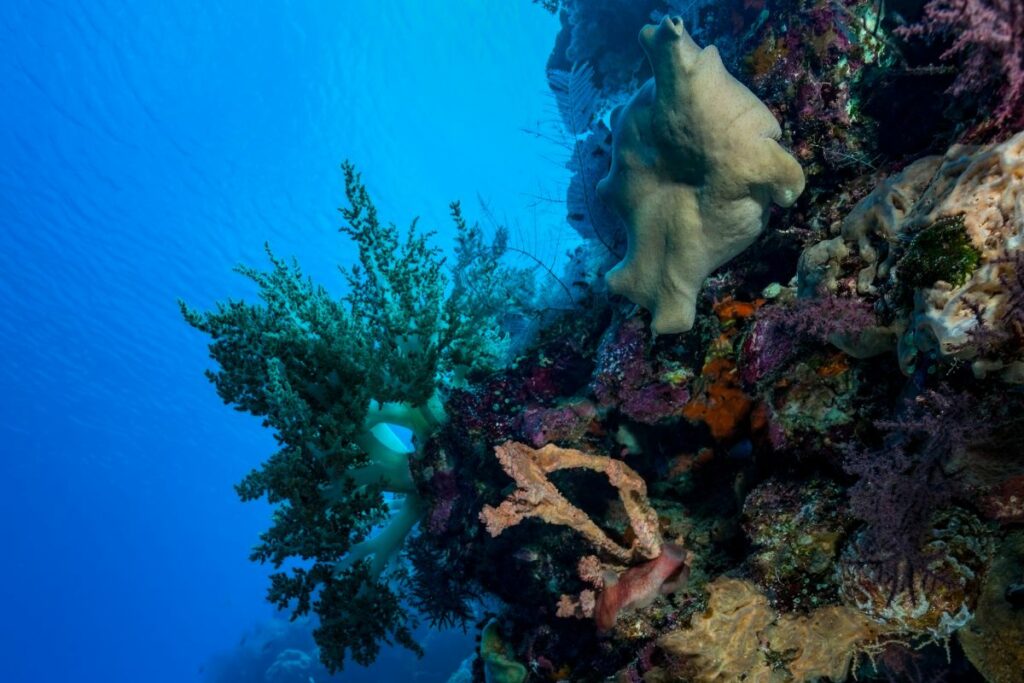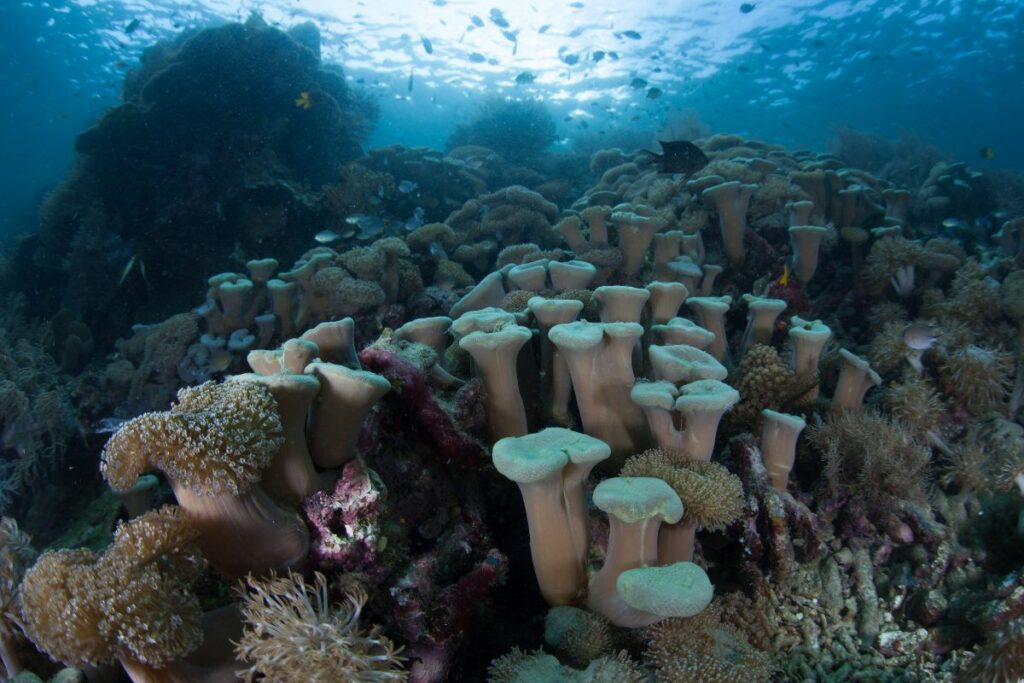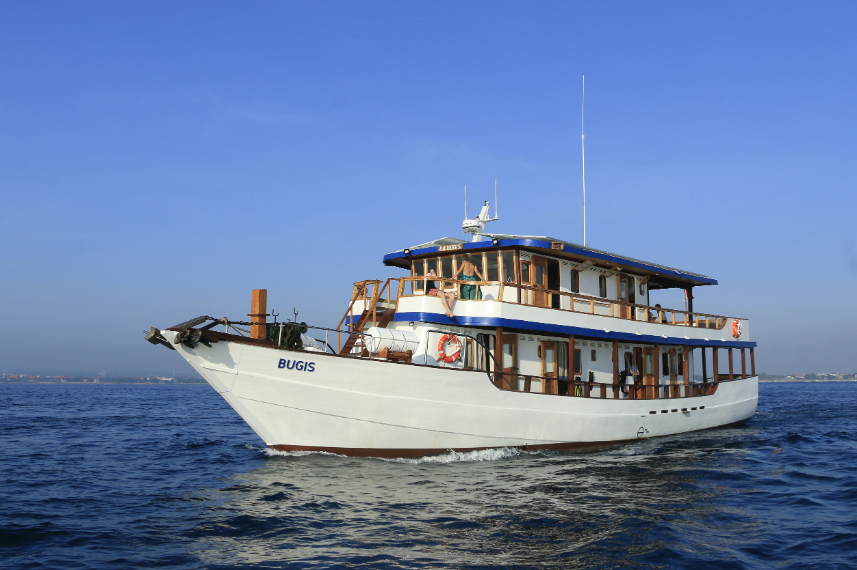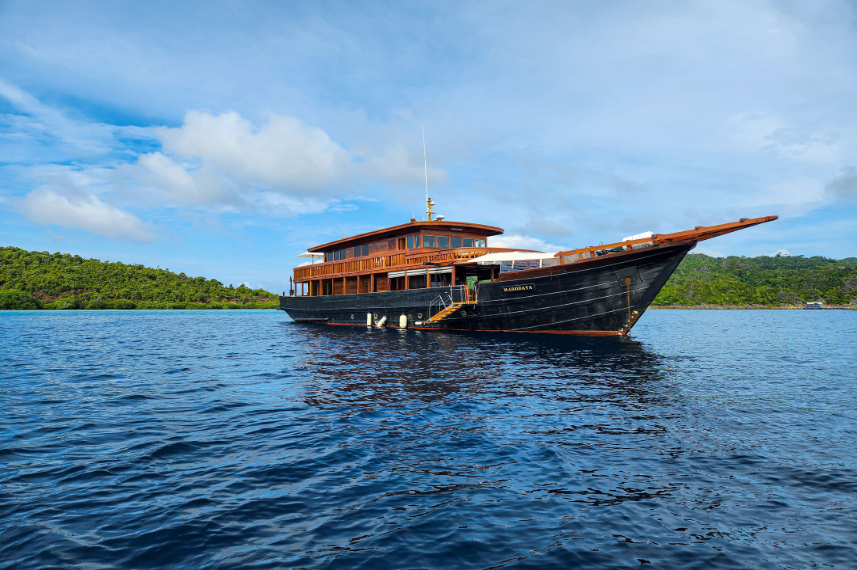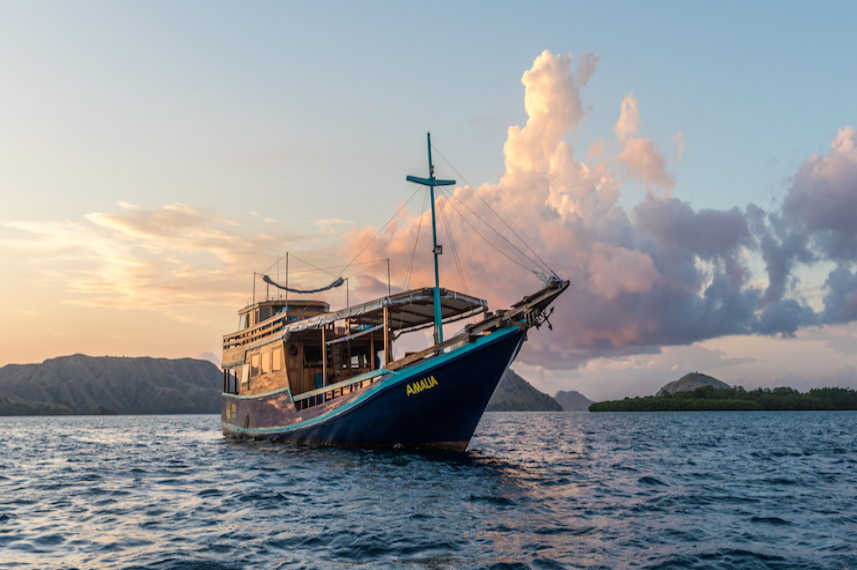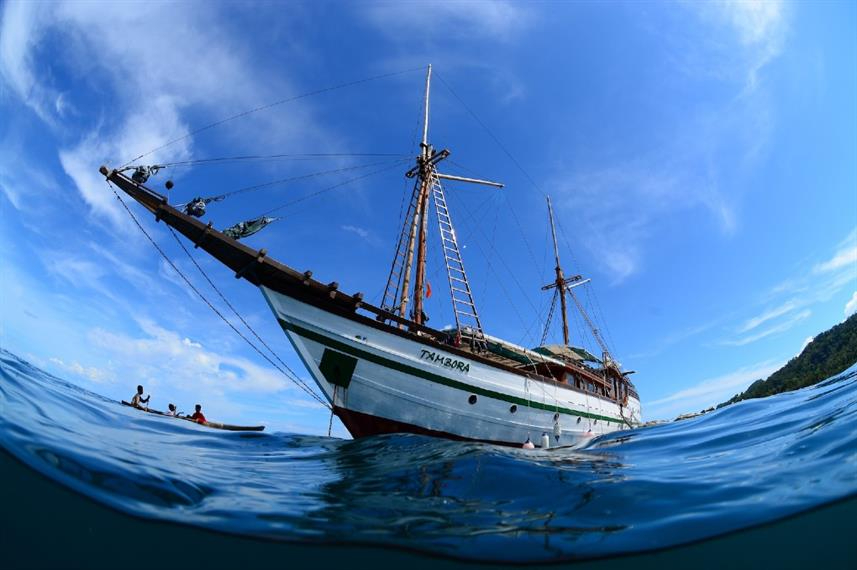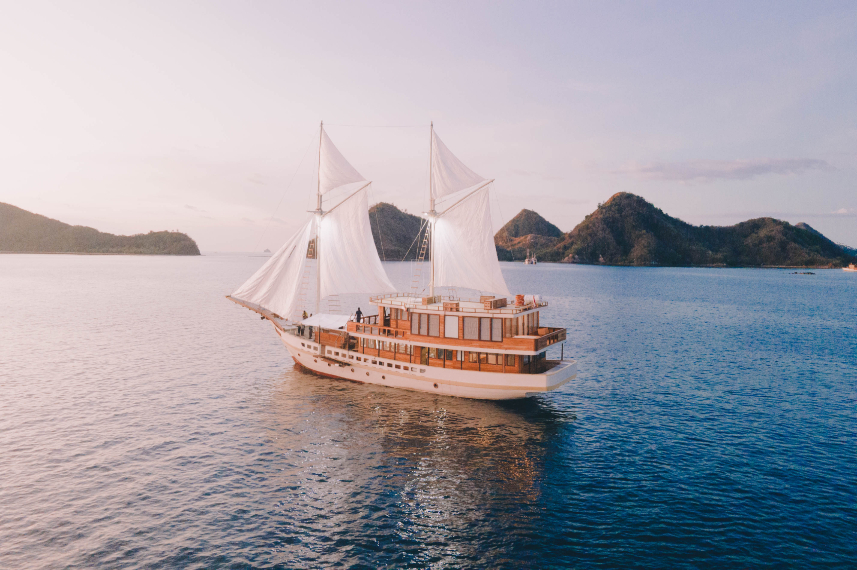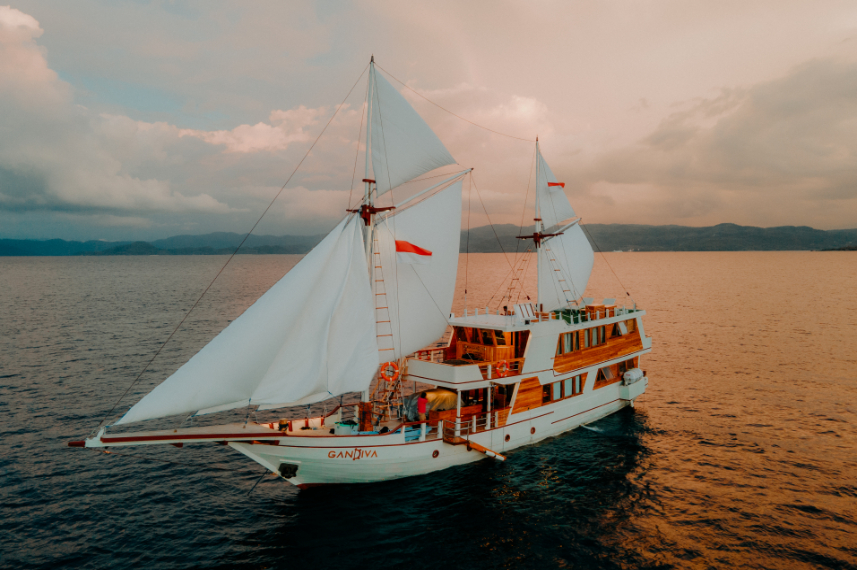Bangka
Just off the shore on the northern coast of Sulawesi lies a chain of islands, with Bangka, Gangga, and Talise being the most significant three. This region provides world-class diving sites with pinnacles and fringing reefs taking the main stage.
Marine life from different families and species has made the waters around Bangka their habitat. From reef fish, critters, and pelagic fish to giant mammals like dolphins and dugongs can be found in Bangka. As one of the centers in the Coral Triangle, the coral reefs in Bangka are incredible, thanks to their location, which exposes them to the open sea and the area’s remoteness.
Top highlights of Bangka
- Peter’s Sponge is the perfect dive site to observe the dugongs due to its shallow water
- Head to Busa Bora for some night diving and critter hunting with its mixture of black and white sand
- Explore the steep pinnacles and walls covered by corals in many of the dive sites in Bangka
- Watch the majestic cetaceans like dolphins and whales during their migratory periods
About Bangka
Bangka is one of the biggest islands in the Bangka Islands, alongside Gangga and Talisei. Part of the North Minahasa regency, this island has four coastal villages. Bordered by the Celebes Sea to the west and the Molucca Sea to the east, and part of the western Pacific Ocean, most of the inhabitants work in the agricultural and fishing industry, with some others employed by the eco-tourism industry, mainly focused on diving and snorkeling.
Often confused with the island with the same name in the eastern part of Sumatra, Bangka is usually considered one of the best diving destinations in Indonesia, alongside Bunaken and Lembeh Strait.
With the currents from three bodies of water, Bangka is the ideal destination for diving, not only for its topography but also for the biodiversity of the marine life, being in the center of the Coral Triangle.
Diving in Bangka
Bangka is similar to Sangihe in terms of the topography. Though not as volcanic as its sibling, they share a resemblance in the form of the pinnacles, which are the primary landscape in the dive sites around Bangka.
The steep walls are covered with soft and hard corals from different species. The table corals, sea fans, tree corals, and sponges in bright colors like yellow, orange, pink, white, and blue create beautiful coral gardens. Anemonefish, clownfish, butterflyfish, Mandarinfish, Napoleon wrasse, batfish, ghost pipefish, and scorpionfish are among the fish species that reside around the coral reefs. Huge schools of barracudas, fusiliers, jacks, tuna, sweetlips, and snappers often create a booming sound with their movements.
Even though not as extensive as Lembeh Strait, the Bangka critters are still remarkable. From cuttlefish, pygmy seahorses, frogfish, different species of octopus, including mimic octopus and poisonous blue-ringed octopus, leaf fish to harlequin and tiger shrimps, crabs, and nudibranchs, Busa Bora and Peter’s Sponge are a few of dive sites in Bangka dedicated for macro enthusiasts.
The islands of Bangka are exposed to the open sea, bringing strong currents in some areas. This condition attracts big mammals like dolphins and whales, such as melon- headed whales, sperm whales, pilot whales, and killer whales, during their migration, which happens during the March-April and August-September periods.
Discover your next adventure in
The Search for Dugong in Bangka
Seeing dugongs may not be on every diver’s list, but encountering one in Bangka should feel special. These giant sea cows are known to be shy creatures, but in Peter’s Sponge, dugongs have made an appearance for those who are patient enough to search for them.
Out of four species in the Sirenia order, dugong dugon is the only living species from the Dugongidae family, while the other three are manatees. These gigantic mammals, with a weight that can reach up to 400 kilograms, are often seen in shallow waters where seagrass is abundant since their diet consists mainly of it, particularly the genera Halophila and Halodule. However, the unique trait is that they do not feed on the lush areas; instead, they prefer the places where seagrass is sparse.
Even though dugongs are often found in groups—as little as two individuals and as many as 200—they are typically a shy species. That is part of the reason why the sightings in Peter’s Sponge are not guaranteed. Aside from that, dugongs are semi- nomadic creatures and are driven entirely by the availability of seagrass. But the best time to see them is the period around sunrise and sunset.
Dugongs are also listed as vulnerable and endangered due to human activities, especially when they get caught in fishing nets since dugongs can only hold their breath for up to 12 minutes. Recent research indicated that the Bangka area is considered to be a corridor for dugong migration from Indonesia to the Philippines.
Diving Environments in Bangka
The underwater topography in Bangka mainly consists of volcanic walls and pinnacles, with volcanic sand and fringing reefs in between. Some dive sites have strong currents that are advisable only for experienced and advanced divers.
The depth around Bangka ranges from 5 to 35 meters, ensuring the encounter with some pelagic fish. The visibility in Bangka varies, and it depends on the dive site. In the ones with pinnacles and fringing reefs, and during the dry season with clear weather, the visibility can exceed 25 meters, while in some areas with sandy seabed, it can fall drastically to only 5 to 10 meters.
The water temperature in Bangka is constant all year long. It always falls between 25 to 29 degrees Celsius, even during the rainy season.
Discover your next adventure in
How to get to Bangka
Similar to Bunaken, Lembeh Strait, or Sangihe, the entry point to get to Bangka is Manado, the capital of North Sulawesi province. Direct flights to Manado are available from Jakarta (Garuda, Batik Air, Citilink), Singapore (Scoot), or Surabaya (Lion Air).
If you depart from Bali, no direct flight is available, as services to Manado often have layovers in Surabaya, Makassar, or Jakarta.
Once arriving in Manado, Bangka is reachable by car in an hour and continues by boat for around 20 minutes.
Diving Seasons & Weather in Bangka
Like the rest of northern Sulawesi dive sites, Bangka is accessible year-round. But the best diving period is from May to October, which coincides with the dry season. During these months, the visibility is excellent. The wet/rainy season occurs between November and April, with choppy sea surfaces and low visibility.
The areas are exposed to strong winds and currents from July to September, but diving is still possible as shelters can always be found.


